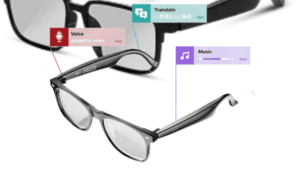Technology has come a long way and has transformed many aspects of our lives, but perhaps nowhere is that more apparent than in the automobile industry.
Time and again, technology has made driving safer for all of us. Technological advancements have enabled the production of cars equipped with sophisticated sensor technologies. The latest development in automotive technology has brought various safety benefits to drivers. This blog post will discuss six ways technology makes driving safer.
1. Brake Assist
Brake assist is designed to respond to sudden unexpected braking situations by increasing braking force. This technology targets the specific problem of delayed braking responses. The system is powered by sensors that detect the speed and proximity of the car in front, enabling it to initiate automatic braking if necessary.
The result is a reduction in the number of accident victims. Of course, if you get in an accident, you’ll still need to call your Boynton Beach car accident attorney and the insurance company. But brake assist could reduce the likelihood of needing to make that call.
2. Backup Camera
With the widespread use of rearview cameras, drivers can reverse their vehicles more safely. The camera helps drivers see what’s behind them, eliminating blind spots or oncoming traffic.
Backup cameras are especially beneficial when reversing in tight parking spaces. They’ve reduced the number of accidents caused by reversing in parking lots.
3. Lane Departure Correction
Lane departure correction uses sensors to detect when a vehicle drifts out of its lane without signaling. This technology helps correct the vehicle’s course by lightly applying the brakes on one side to steer it back into its lane.
The system has reduced single-vehicle run-off-road, head-on, and sideswipe crashes (usually caused by lane drifts) by 11%.
4. Blind Spot Detection
Blind spot detection is designed to act as a second pair of eyes for drivers, relying on sensors to detect vehicles in the driver’s blind spot and alert the driver with either visual or audible warnings. Blind spot systems have proven to be a helpful safety feature, reducing accidents related to drivers changing lanes without looking over their shoulders by 23%.
5. Auto-Steering
Autonomous steering, such as Tesla’s auto-steer technology, uses radar and camera sensors to maintain the vehicle’s position in the lane. This technology reduces accident rates caused by overcorrection, driver fatigue, and distraction. It also triggers stability controls when necessary and reduces overall driving stress, leading to a safer driving experience.
While auto-steering shouldn’t be used in replacement of human interaction, it can be a helpful complement.
6. Bluetooth
Bluetooth is a technology that allows drivers to take calls hands-free while driving. Connecting your smartphone to the car’s audio system allows you to make and receive calls without taking your hands off the wheels or your eyes off the road. This feature helps reduce driver distraction and increases driver concentration on the street, improving safety.
Driving Safer with Tech
The development of technology has made driving safer by improving road safety. While the systems discussed above are not infallible, even one could protect you from reckless driving behavior. With innovative technology and responsible driving, we can enjoy safer roads.



































